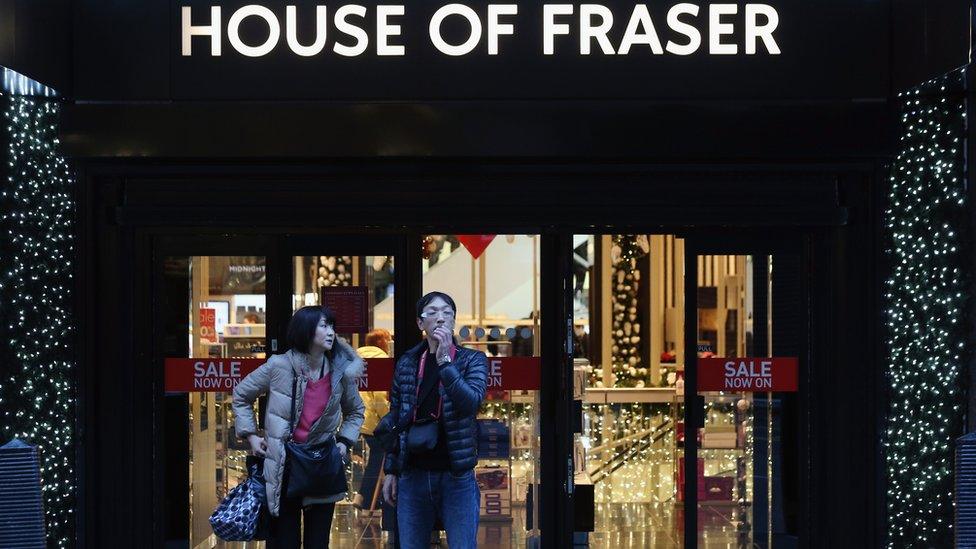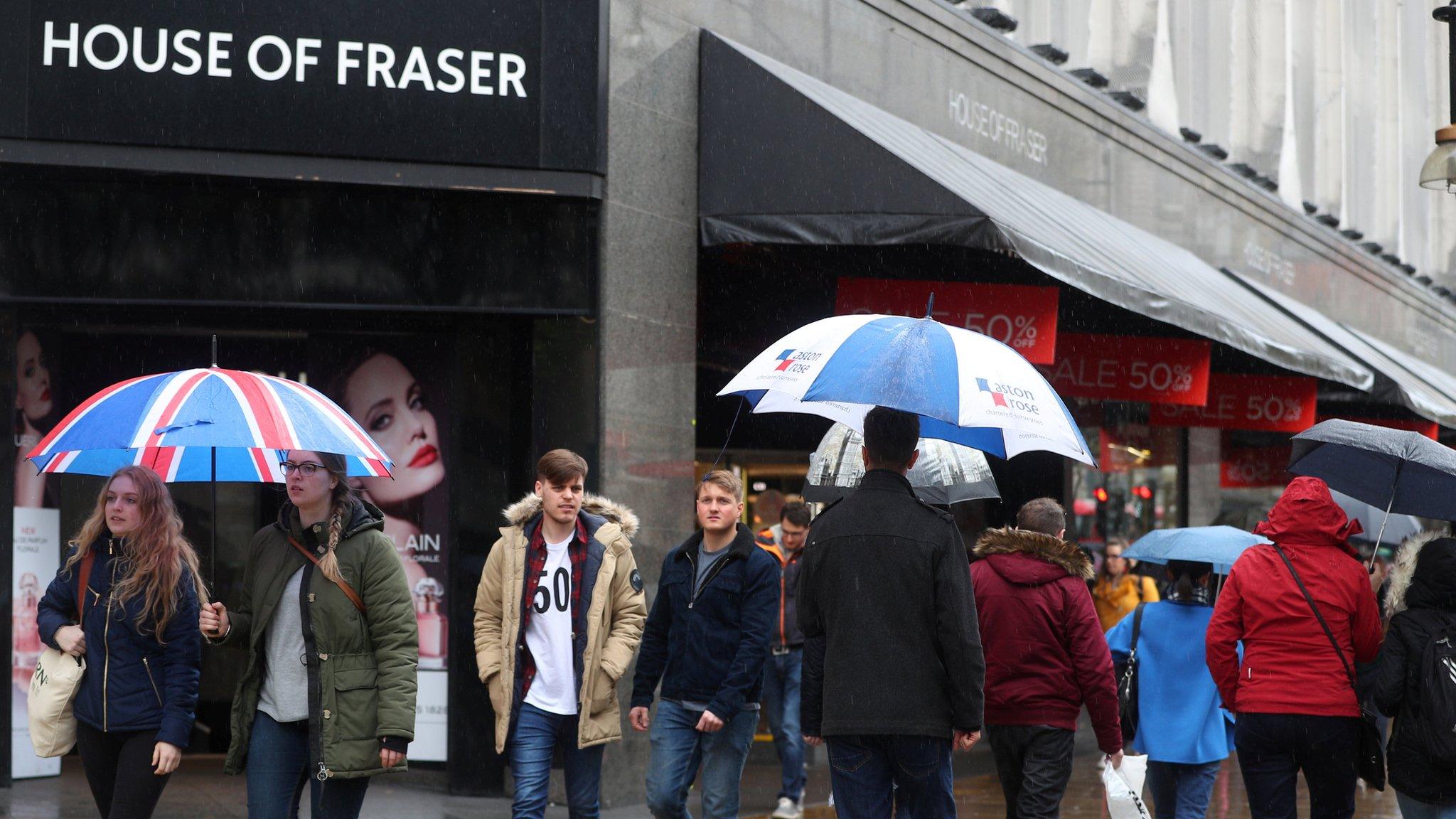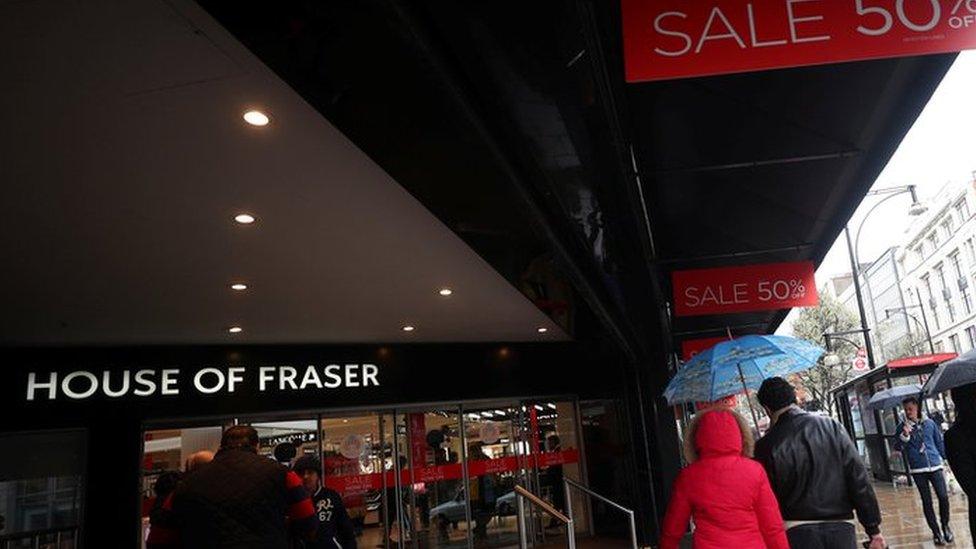House of Fraser slumps to £44m loss
- Published
- comments

Department store group House of Fraser lost almost £44m in 2017 as sales fell.
The department store's potential new Chinese owner, C.Banner, said the loss of £43.9m reversed a pre-tax profit of £1.5m for the previous year, while sales fell 6.3% to £787.8m.
It blamed Brexit, terror attacks and online for damaging the performance of the group, which owns 59 UK stores.
The Chinese group has agreed to take a 51% stake in House of Fraser if the chain pushes through a turnaround plan.
The extent of the chain's financial problems were revealed in a document submitted by C.Banner, external to the Hong Kong Stock Exchange, announcing its proposal to acquire the stake in House of Fraser.
It pointed out that the annual loss figure for the House of Fraser group included the start-up and operating costs of House of Fraser China, but excluded the licence fee payable from the Chinese business to House of Fraser UK for the use of the name in that market.
Separate figures for the UK business have yet to be reported.
However, the document said: "The Brexit referendum and the UK's resultant decision to leave the European Union and the terrorist attack in London, combined with a rapidly evolving retail market, produced a period of uncertainty and volatility that resulted in a difficult trading environment for the whole retail industry in the UK."
However, C.Banner said House of Fraser would become "more stable" after completing its restructuring plan and "take advantage of its well-known brand to capture growth potential".
Earlier this month, C.Banner said it would take a controlling stake in the retailer from another Chinese firm, Nanjing Cenbest, but only if House of Fraser agreed a Company Voluntary Arrangement (CVA) with its creditors.
The chain expects to make a formal CVA proposal next month, with a full restructuring in place by early 2019.
Store closures are planned and the chain wants to renegotiate rents on others.
A CVA is designed to help a struggling company to pay back a proportion of its debts over time.
It involves a strict repayment scheme overseen by an insolvency practitioner and must be approved by at least three quarters of the firm's creditors.
- Published2 May 2018

- Published19 April 2018
